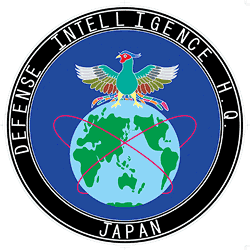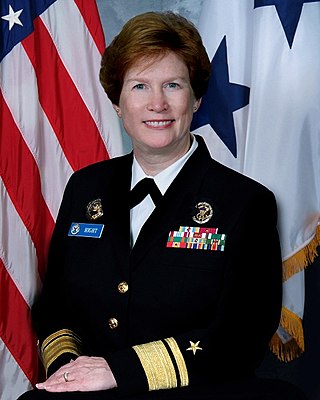
ECHELON, originally a secret government code name, is a surveillance program operated by the five signatory states to the UKUSA Security Agreement: Australia, Canada, New Zealand, the United Kingdom and the United States, also known as the Five Eyes.

The Australian Signals Directorate (ASD), formerly the Defence Signals Directorate (DSD), is the federal statutory agency in the Australian Government responsible for foreign signals intelligence, support to military operations, cyber warfare, and information security. ASD is part of the Australian Intelligence Community. ASD's role within UKUSA Agreement is to monitor signals intelligence ("SIGINT") in South and East Asia. The ASD also houses the Australian Cyber Security Centre.

Interoperability is a characteristic of a product or system to work with other products or systems. While the term was initially defined for information technology or systems engineering services to allow for information exchange, a broader definition takes into account social, political, and organizational factors that impact system-to-system performance.

The Defense Information Systems Agency (DISA), known as the Defense Communications Agency (DCA) until 1991, is a United States Department of Defense (DoD) combat support agency composed of military, federal civilians, and contractors. DISA provides information technology (IT) and communications support to the President, Vice President, Secretary of Defense, the military services, the combatant commands, and any individual or system contributing to the defense of the United States.

The Anglosphere is the Anglo-American sphere of influence, with a core group of nations that today maintain close political, diplomatic and military co-operation. While the nations included in different sources vary, the Anglosphere is usually not considered to include all countries where English is an official language, so it is not synonymous with the sphere of anglophones, though commonly included nations are those that were formerly part of the British Empire and retained the English language and English Common Law.

The United Kingdom – United States of America Agreement is a multilateral agreement for cooperation in signals intelligence between Australia, Canada, New Zealand, the United Kingdom, and the United States. The alliance of intelligence operations is also known as the Five Eyes. In classification markings this is abbreviated as FVEY, with the individual countries being abbreviated as AUS, CAN, NZL, GBR, and USA, respectively.

Selex ES was a subsidiary of Finmeccanica, active in the electronics and information technology business, based in Italy and the UK, and formed in January 2013, following Finmeccanica's decision to combine its existing SELEX Elsag and SELEX Sistemi Integrati businesses into SELEX Galileo, the immediate predecessor of Selex ES. From 1 January 2016, the activities of Selex ES merged into Leonardo-Finmeccanica's Electronics, Defence and Security Systems Sector becoming Leonardo S.p.A.
The Combined Communications-Electronics Board (CCEB) is a five-nation joint military communications-electronics (C-E) organisation whose mission is the coordination of any military C-E matter that is referred to it by a member nation. The member nations of the CCEB are Australia, Canada, New Zealand, the United Kingdom, and the United States. The CCEB is the Sponsoring Authority for all Allied Communications Publications (ACPs). ACPs are raised and issued under common agreement between the member nations. The CCEB Board consists of a senior Command, Control, Communications and Computer (C4) representative from each of the member nations.

The Five Eyes (FVEY) is an anglosphere intelligence alliance comprising Australia, Canada, New Zealand, the United Kingdom, and the United States. These countries are party to the multilateral UK-USA Agreement, a treaty for joint cooperation in signals intelligence. Informally, "Five Eyes" can refer to the group of intelligence agencies of these countries. The term "Five Eyes" originated as shorthand for a "AUS/CAN/NZ/UK/US EYES ONLY" (AUSCANNZUKUS) releasability caveat.

ABCANZ Armies is a program aimed at optimizing interoperability and standardization of training and equipment between the armies of Australia, Canada, New Zealand, the United Kingdom, and the United States, plus the United States Marine Corps and the Royal Marines. Established in 1947 as a means to capitalize on close cooperation between the United States, United Kingdom, and Canada during World War II, the program grew to include Australia and New Zealand.
Signals intelligence by alliances, nations and industries comprises signals intelligence (SIGINT) gathering activities by national and non-national entities; these entities are commonly responsible for communications security (COMSEC) as well.

Canada and New Zealand have a longstanding relationship fostered by a shared history and culture. The two countries are former British Dominions and have a common head of state in King Charles III. Both nations are members of the Asia-Pacific Economic Cooperation, Cairns Group, Commonwealth of Nations, Five Eyes, OECD and the United Nations.

The Defense Intelligence Headquarters is a military intelligence and signal intelligence agency of the Japanese government, under the jurisdiction of the Japanese Ministry of Defense. It is currently one of the biggest Japanese intelligence agencies, with its creation and structure modeled after the American Defense Intelligence Agency.

The Estonian Defence Forces is the unified military force of the Republic of Estonia. The Estonian Defence Forces consists of the Estonian Land Forces, the Estonian Navy, the Estonian Air Force, and the paramilitary Estonian Defence League. The national defence policy aims to guarantee the preservation of the independence and sovereignty of the state, the integrity of its land area, territorial waters, airspace and its constitutional order. Its main goals remain the development and maintenance of a credible capability to defend the nation's vital interests and development of the defence forces in a way that ensures their interoperability with the armed forces of NATO and European Union member states to participate in the full range of missions for these military alliances.

Elizabeth Ann Hight is a retired United States Navy rear admiral who served as the vice director of the Defense Information Systems Agency (DISA). She assumed this post in December 2007. In 2008, she was nominated for appointment to the grade of vice admiral and assignment as director, Defense Information Systems Agency; commander, Joint Task Force – Global Network Operations; and deputy commander, U.S. Strategic Command Global Network Operations and Defense, Arlington, Virginia. Her nomination was rejected by the Senate due to a perceived conflict of interest with her husband, retired Air Force Brigadier General Gary Salisbury, who is vice president of business development and sales for Northrop Grumman Corp.'s mission systems sector, defense mission systems division. She retired from the Navy in 2010.
The Technical Cooperation Program (TTCP) is a long-standing international organisation concerned with cooperation on defence science and technology matters, including national security and civil defence. Its membership comprises Australia, Canada, New Zealand, the United Kingdom (UK) and the United States (US).
The Five Eyes Air Force Interoperability Council(AFIC) is a formal military organisation, consisting of the "Five Eyes" countries, Australia, Canada, New Zealand, the United Kingdom and United States. The organisation is responsible for enhancing Air Force interoperability amongst member nations' Air Forces. The use of the term "Five Eyes" stems from the informal name for the intelligence sharing network consisting of Australia, Canada, New Zealand, United Kingdom and United States.
All Partners Access Network (APAN), formerly called Asia-Pacific Area Network, is a United States Department of Defense (USDOD) social networking website used for information sharing and collaboration. APAN is the premier collaboration enterprise for the USDOD. The APAN network of communities fosters multinational interaction and multilateral cooperation by allowing users to post multimedia and other content in blogs, wikis, forums, document libraries and media galleries. APAN is used for humanitarian assistance and disaster relief, exercise planning, conferences and work groups. APAN provides non-governmental organizations (NGOs) and U.S. partner nations who do not have access to traditional, closed USDOD networks with an unclassified tool to communicate.

This article outlines the defence forces of the European Union (EU), which implement the EU's Common Security and Defence Policy (CSDP) in CSDP missions. There are two categories of EU multinational forces: ones that have been established intergovernmentally and made available to the CSDP through Article 42(3) of the Treaty on European Union (TEU), such as the Eurocorps; and the EU Battlegroups, established at the EU level.











